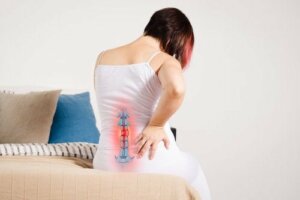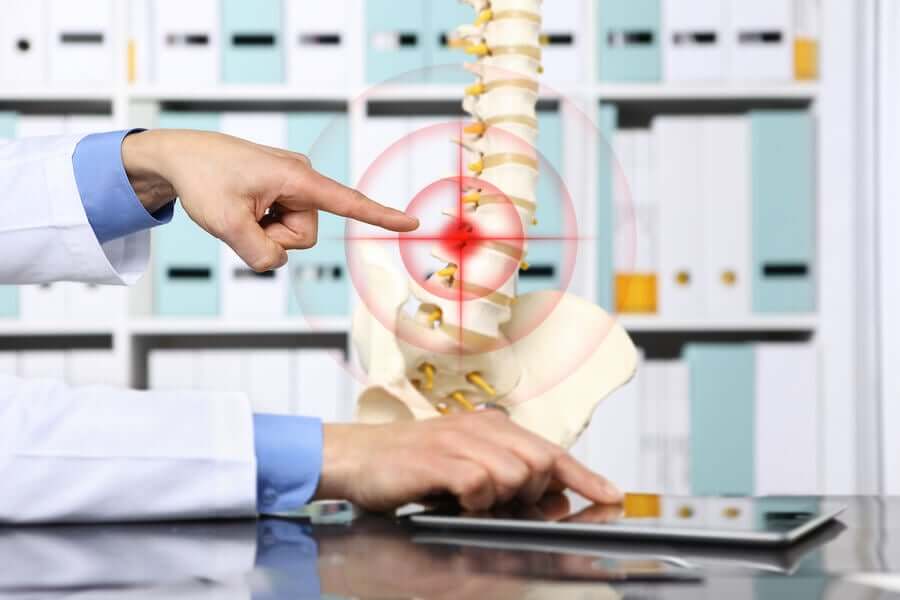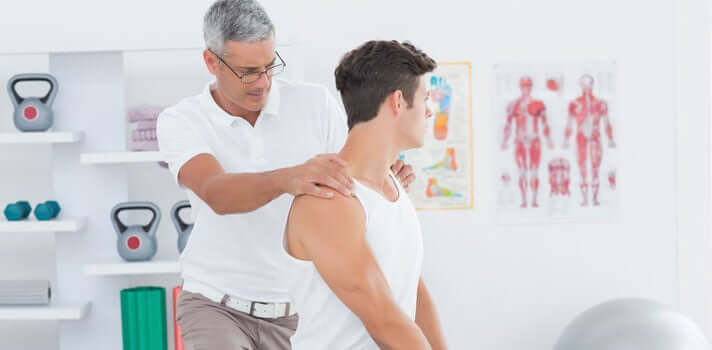Natural Treatment for Herniated Discs

Herniated discs are a very common health problem. In fact, according to medical estimates, 1 out of every 100 adults in the world suffers from this condition. Likewise, experts believe that at least 50% of people suffer, or will suffer, from some type of problem in their back during their lives.
We know that disc herniation is more frequent in the cervical or lumbar area, that is to say, in the neck, or the lower part of the back. This is because these are the areas of the spine that have the greatest mobility. However, a hernia can occur in any segment of the spine.
Not all persistent pain in the back is due to to a disc herniation. Likewise, not all herniated discs produce pain. Experts believe that about 30% of the population could have herniated discs without experiencing any symptoms.
Herniated discs

The spine is made up of several bones called vertebrae. Adults have a total of 26 vertebrae. Each vertebra is separated on either side by intervertebral discs. The only exception is the area of the sacrum and coccyx where there are no discs.
The discs are made up of a pulpous tissue. Their main function is to cushion the impact between the vertebrae, during movement. They have a high water content, which begins to decrease with time.
As we said before, these discs have a fibrous ring surrounding them. When the disc loses strength, due to age or trauma, the fibrous ring can break. This is when the disc herniation forms, and it’s usually painful and even disabling. It can often be corrected through surgery, but it can also be treated by resorting to alternative solutions.
Read more: Symptoms of Degenerative Disc Disease
Nutrition as a means of treating herniated discs
One of the measures to both prevent and treat disc herniation is to follow a proper diet. Drinking enough water daily is essential, and experts recommend that adults consume at least two liters per day. This protects the intervertebral discs and reduces inflammation if there’s a herniated disc.
A good diet won’t correct a herniated disc by itself, but it does contribute decisively to the treatment. Combined with other measures, it usually gives good results. It’s advisable to have a diet based on fruits, vegetables, whole grains, and all kinds of antioxidant foods.
Likewise, acidifying or inflammatory elements should be avoided. Some of these are red meat, sugar, food containing preservatives or colorings, food containing gluten, and the so-called “junk food”, among others.
Physiotherapy and chiropractics

Physiotherapy is one of the most commonly used resources for treating disc conditions. Generally, the health professional will prescribe an exercise routine that should be followed carefully. The application of cold, heat, or both, are frequently used in the affected area.
One of the most effective treatments for disc herniation is chiropractics. On this point, it’s important to emphasize that whoever carries out this type of intervention must be someone well-trained and experienced. A bad chiropractor may not only be ineffective, but in some cases dangerous.
A good chiropractor can correct a herniated disc, whether in the cervical or lumbar area. The objective of this treatment is for the vertebra to reabsorb the tissue, thus healing the hernia completely. In the early stages, it’s also a very effective measure against pain.
Don’t miss: What is Global Postural Reeducation?
Phytotherapy
Some medicinal plants can be taken as an infusion, and these can help treat the symptoms of a herniated disk. In particular, they reduce inflammation and pain. One of the most effective is the infusion of thyme, oregano, and horsetail. Together they have an anti-inflammatory effect that’s very beneficial for this condition.
- Simply take a pan and add half a liter of water.
- After, add a teaspoon each of thyme, oregano, and horsetail.
- Put it on medium heat and let it boil for five minutes.
- Then, let it sit for 10 minutes and strain.
- You should drink three cups a day, before mealtimes.
You can also prepare an infusion of thyme and rosemary in the same way. Other plants that serve the same purpose are white willow bark and harpagophyte root.
Remember that none of these measures should replace a doctor’s consultation.
All cited sources were thoroughly reviewed by our team to ensure their quality, reliability, currency, and validity. The bibliography of this article was considered reliable and of academic or scientific accuracy.
- Amin RM, Andrade NS, Neuman BJ. Lumbar Disc Herniation. Curr Rev Musculoskelet Med. 2017;10(4):507–516. doi:10.1007/s12178-017-9441-4
- Costi JJ, Hearn TC, Fazzalari NL. The effect of hydration on the stiffness of intervertebral discs in an ovine model. Clin Biomech (Bristol, Avon). 2002 Jul;17(6):446-55.
-
Dydyk AM, Ngnitewe Massa R, Mesfin FB. Disc Herniation. In: StatPearls [Internet]. Treasure Island (FL): StatPearls Publishing; 2022 Jan.
- Dulebohn SC, Ngnitewe Massa R, Mesfin FB. Disc Herniation. [Updated 2019 Apr 13]. In: StatPearls [Internet]. Treasure Island (FL): StatPearls Publishing; 2019 Jan-. Available from: https://www.ncbi.nlm.nih.gov/books/NBK441822/
- Felipe Morán, A. (2001). Criterios científicos actuales en el tratamiento del paciente con hernia discal lumbar. Revista Cubana de Medicina Militar, 30(1), 15-20.
- Lin XJ, Chen CY. [Advances on study of treatment of lumbar disk herniation by Chinese medicinal herbs]. Zhongguo Zhong Yao Za Zhi. 2007 Feb;32(3):186-91.
- Pourahmadi MR, Taghipour M, Ebrahimi Takamjani I, Sanjari MA, Mohseni-Bandpei MA, Keshtkar AA. Motor control exercise for symptomatic lumbar disc herniation: protocol for a systematic review and meta-analysis. BMJ Open. 2016;6(9):e012426. Published 2016 Sep 27. doi:10.1136/bmjopen-2016-012426
- Seyithanoglu H, Aydin T, Taşpınar O, et al. Association between nutritional status and Modic classification in degenerative disc disease. J Phys Ther Sci. 2016;28(4):1250–1254. doi:10.1589/jpts.28.1250
- Singh V, Malik M, Kaur J, Kulandaivelan S, Punia S. A systematic review and meta-analysis on the efficacy of physiotherapy intervention in management of lumbar prolapsed intervertebral disc. Int J Health Sci (Qassim). 2021 Mar-Apr;15(2):49-57.
- Tang S, Mo Z, Zhang R. Acupuncture for lumbar disc herniation: a systematic review and meta-analysis. Acupunct Med. 2018 Apr;36(2):62-70.
- Turner RC, Lucke-Wold BP, Boo S, Rosen CL, Sedney CL. The potential dangers of neck manipulation & risk for dissection and devastating stroke: An illustrative case & review of the literature. Biomed Res Rev. 2018;2(1):10.15761/BRR.1000110. doi:10.15761/BRR.1000110
- Luo, Y., Huang, J., Xu, L., Zhao, W., Hao, J., & Hu, Z. (2014). Efficacy of Chinese herbal medicine for lumbar disc herniation: a systematic review of randomized controlled trials. Journal of Traditional Chinese Medicine, 33(6), 721–726. https://doi.org/10.1016/s0254-6272(14)60003-0
- Zhou Y, Yang M. Clinical Effect of the Treatment of Lumbar Intervertebral Disc Protrusion. Appl Bionics Biomech. 2022 Apr 29;2022:6803124.
This text is provided for informational purposes only and does not replace consultation with a professional. If in doubt, consult your specialist.








